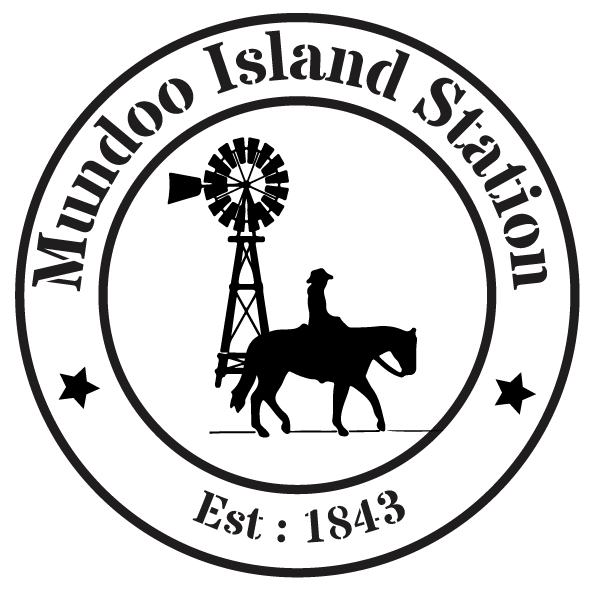
Mundoo Island Station
Est - 1843
5 Day Weather Forecast
Barrages
The Coorong Barrages
In 1930, the River Murray Commission recommended the construction of five barrages across the channels leading from the lakes to the Murray mouth in order to maintain the freshness of the River Murray as far down as Wellington, to maintain the water level for irrigation purposes and to prevent the ingress of salt water from the sea into the Lower Lakes during periods of low Murray River flow.
The benefits of a barrage scheme were debated over many years and it was ultimately agreed that the barrages should be built to maintain fresh water in the Lower Lakes and lower reaches of the River Murray.
The Mundoo Barrage and Boundary Creek Barrage adjoin Mundoo Island and the Boundary Creek Barrage and Ewe Island Barrage adjoin Ewe Island. Our family history on Mundoo Island Station pre-dates the barrages. We have witnessed many changes through the years as a result of the barrages ... some good and some not so good.
The state government leased portions of Mundoo Island and Ewe Island from Jack Grundy so that a township and workman's camp could be constructed to house the workmen and their families during the construction phase. A school was opened on Mundoo Island to educate the children of the workmen's families. It was a thriving township for the period of construction.
Murray Darling Basin Authority: All About The Barrages Fact Sheet
and lower reaches of the river remain fresh, not only for environmental reasons but as a water supply source.
There are five barrages that separate Lake Alexandrina from the Goolwa Channel and the Coorong — Goolwa, Mundoo, Boundary Creek, Ewe Island and Tauwitchere.
The barrages maintain the river level between the Lower Lakes and Lock 1 at Blanchetown, a distance of about 250 km. Adelaide, parts of the mid-north, Yorke Peninsula and south-east South Australia depend on water pumped from this weir pool. The water in this reach is also directly drawn for towns and agriculture around the Lower Lakes and River Murray up to Lock 1.
Why were the barrages built?
From the 1880s the South Australian Government was concerned about maintaining fresh water supplies for stock, irrigation and domestic purposes for settlements along the lower Murray and around the Lower Lakes. There was concern that due to increasing use of water all along the river, flows would not be sufficient to keep the lakes fresh.
The government also wanted to ensure there was enough water in the River Murray to allow navigation for river boats (and therefore trade) between New South Wales, Victoria and South Australia.
For many years, and throughout several inquiries and commissions, the barrages scheme was generally not supported by the other states.
The River Murray Waters Agreement (1915) established the River Murray Commission and water sharing arrangements between New South Wales, South Australia and Victoria. It also provided for the construction of the storages, weirs and locks that regulate the river for irrigation and allow navigation. South Australia was provided with flows to protect the settlements along the lower River Murray as far as Wellington from salinity, but Lakes Alexandrina and Albert were excluded.
The barrages were not included in the original scheme of works for the River Murray. South Australia continued to lobby for their construction on the basis of increasing salinity with general support from local landholders keen to secure fresh water. Salinity had increased from allowing the Lower Lakes to support a Murray Cod fishery in the 1800s, to supporting a salt water fishery in the 1930s.
Opposing concerns were raised that the barrages may impede navigation and cause the siltation of the Murray Mouth. Goolwa fishermen thought the barrages would prevent fish entering the river and lakes and reduce their catch. Some landholders were worried that during floods, more land and river townships would be inundated as a result of the barrages maintaining elevated levels in the Lower Lakes.
After construction of the barrages, South Australia finally had the confidence to connect Adelaide’s water supply to the River Murray downstream of Lock 1.
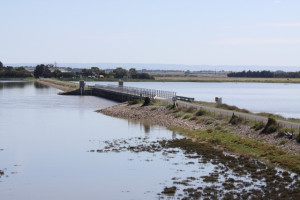
Mundoo Barrage
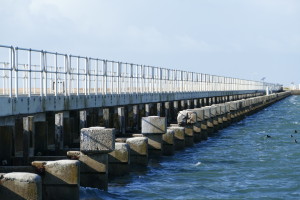
Ewe Island Barrage
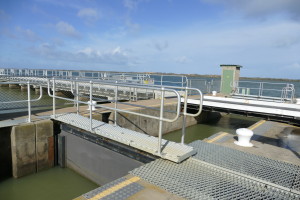
Hand-operated lock chamber in the Tauwitcherie Barrage to allow passage of vessels from fresh to salt or salt to fresh
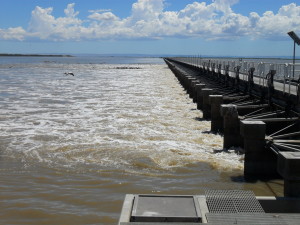
Floodwaters released from Tauwitcherie Barrage February 2012
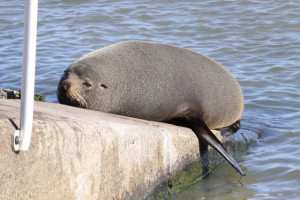
New Zealand Fur Seals have colonised the Coorong and often haul-out on the barrage structures

Mundoo Island Township built mid-1930's for barrage construction accommodation
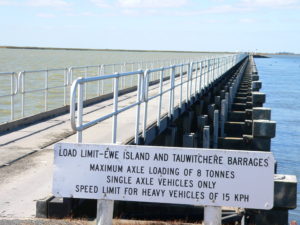
Ewe Island Barrage